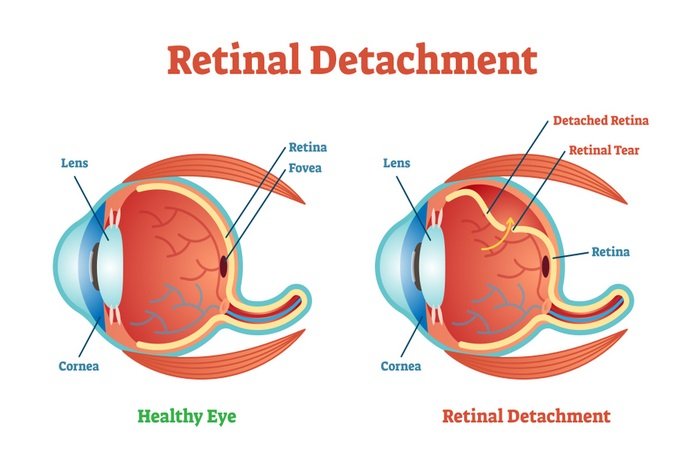Retinal Detachment

Diabetic retinopathy might lead to scars developing at the back of your eye. When these scars stretch your retina away from the back of an eye, it is known as fractional retinal detachment.
Anyone who is experiencing any type of diabetes such as diabetes type 1 and type 2, might have diabetic retinopathy. The longer an individual has diabetes and the bad their blood sugar control gets is increasing the risk of having diabetic retinopathy. The following reasons might also give rise to the risk of having diabetic retinopathy, such as:
- Smoking
- Having increasing levels of cholesterol
- Getting pregnant
- Having high blood pressure
- Being Native American, Hispanic, or African-American
Diabetic retinopathy is occurring by increasing blood sugar levels because of diabetes. By the time, having a lot of sugar in your blood might harm your retina. Therefore, the part of an eye that recognizes light and sends signals to the brain by a nerve at the back of an eye (known as the optic nerve). Diabetes might harm blood vessels all over your body. Such harm to your eye begins when the sugar blocks the tiny blood, a vessel that passes to your retina causing the leakage of fluid or even blood. To form up for such blocked blood vessels, your eyes might grow new blood vessels that do not work properly.
These new blood vessels might cause leakage or bleed so easily. Diabetic retinopathy is occurring by prolonged increasing blood glucose levels. By the time, increasing sugar glucose level might damage and weaken the small blood vessels within your retina. This might lead to hemorrhages, transude, and even swelling in your retina. These then weaken the retina of oxygen and abnormal blood vessels might grow. Therefore, good blood sugar control aids in lowering the risk of diabetic retinopathy. Diabetic retinopathy is an eye disorder that occurs due to diabetes complications. Diabetes might lead to the damage of blood vessels that nourish your retina, the prominent part of an eye.
Therefore, cranial nerves are the nerves that arise directly from your stem under the brain in comparison to the spinal cord. Diabetic retinopathy might also give rise to the damaged blood vessels that nourish the nerves leading to your eye muscles similarly. Such damage leads to the lack of blood supply, raising a total or partial loss of few muscle functions and misalignments of an eye. The misalignment of the muscles gives rise to the brain to get two images from such nerves. However, leading to double vision (known as diplopia). (2)
